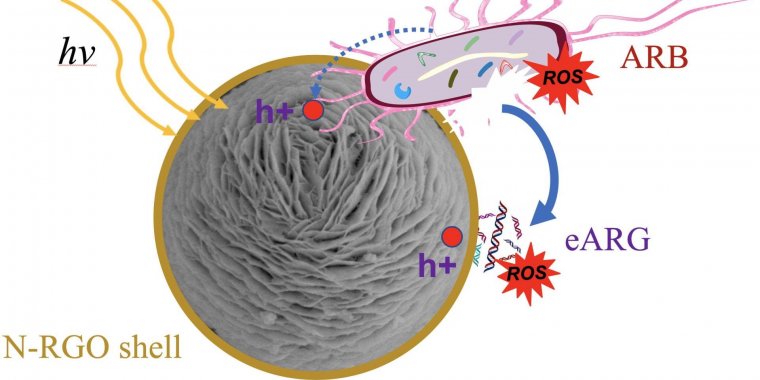| News / Science News |
Better wastewater treatment
A shield of graphene helps particles destroy antibiotic-resistant bacteria and free-floating antibiotic resistance genes in wastewater treatment plants. This new strategy was developed at Rice University as "wrap, trap and zap."

Graphene-wrapping innovation increases effectiveness of fighting superbugs in wastewater treatment. Photo: Alvarez Research Group/Rice University
Rice environmental scientist Pedro Alvarez and team introduced microspheres wrapped in graphene oxide.
Alvarez and his partners in the Rice-based Nanosystems Engineering Research Center for Nanotechnology-Enabled Water Treatment have worked toward quenching antibiotic-resistant "superbugs" since first finding them in wastewater treatment plants in 2013.
"Superbugs are known to breed in wastewater treatment plants and release extracellular antibiotic resistance genes (ARGs) when they are killed as the effluent is disinfected," Alvarez said.
"Our innovation would minimize the discharge of extracellular ARGs, and thus mitigate dissemination of antibiotic resistance from wastewater treatment plants," he said.
The Rice lab showed that graphene-wrapped spheres inactivated multidrug-resistant Escherichia coli bacteria and degraded plasmid-encoded antibiotic-resistant genes in secondary wastewater effluent.
The graphene-wrapped spheres produced three times the amount of reactive oxygen species (ROS) as did the spheres alone.
The spheres themselves are photocatalysts that produce ROS when exposed to light. Lab tests showed that wrapping the spheres minimized the ability of ROS scavengers to curtail their ability to disinfect the solution.
The researchers said nitrogen-doping the shells increases their ability to capture bacteria, giving the catalytic spheres more time to kill them. The enhanced particles then immediately capture and degrade the resistant genes released by the dead bacteria before they contaminate the effluent.
Because the wrapped spheres are large enough to be filtered out of the disinfected effluent, they can be reused. Tests showed the photocatalytic activity of the spheres was relatively stable, with no significant decrease in activity after 10 cycles. That was significantly better than the cycle lifetime of the same spheres minus the wrap. (National Science Foundation)
YOU MAY ALSO LIKE





